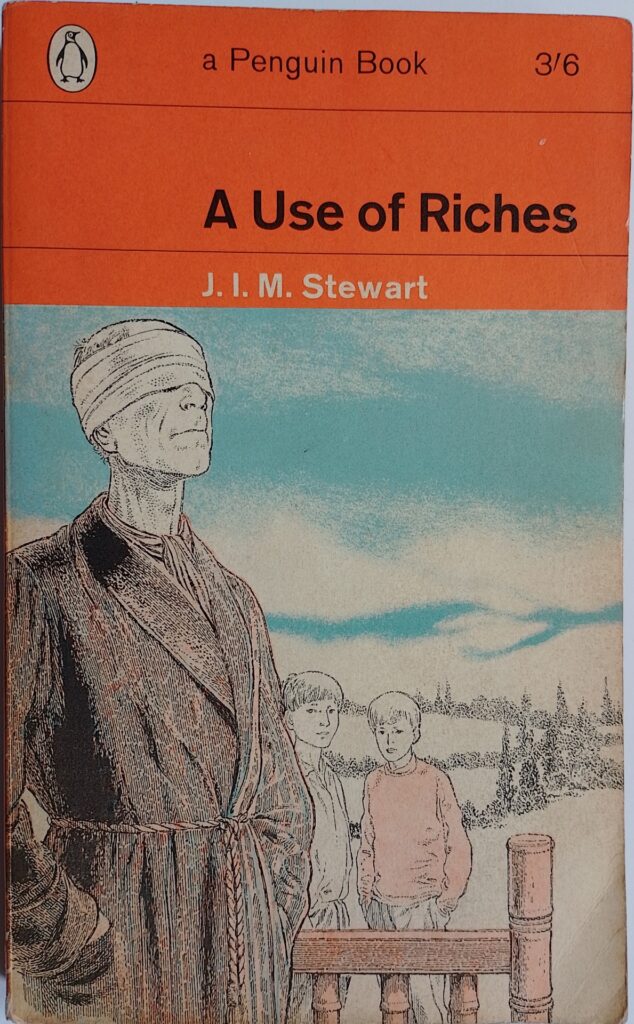First published 1957. Penguin, paperback, 1963, pp 217, c.65,000 words.
Stewart was a prolific novelist, writing over eighty books, as well as being a fellow of English at Oxford University. He is perhaps best known for his detective Appelby, who featured in many books written under the pen name of Michael Innes.
The protagonist of this book is a late middle-aged, successful merchant banker who has a taste for art. We first meet him in The City of London, on his way to meeting his accountant (given a silly name as Stewart occasionally does) to set up trusts for his children, including for his independently wealthy wife’s children by her first husband. This is the post-war world where The City is being rebuilt in glass and steel. From his accountant, his journey takes him to an art dealer who has a picture he is thinking of buying. The dealer has acquired some of the best paintings by the wife’s former husband. We learn that the painter was a great artist, but was killed during the second world war.
So the setting for the book is amongst the monied upper-middle class. But it is also a book about art, genius and the entitlements of genius. The settings, as well as The City, include country houses, smart hotels and Tuscan villas. Children are educated at private schools and expect their paths through Oxford University and into the professions to be eased for them, thanks to their parents’ wealth and connections. There is no thought that this might be unfair, or in any way contributing to the relative decline of Britain compared with more meritocratic countries.
The opening is rather soporific and ho-hum, but then Stewart drops the first bomb-shell. It is well done. However I had considerable trouble with the reactions of the main characters as events unfold. I just could not see real humans reacting as they did. There is considerable melodrama and yet the protagonist remains buttoned up, a good egg, trying to do the right thing. It is a very old-school British sensibility that is increasingly hard to credit and today suggests a considerable degree of either hypocrisy or totally suppressed feeling.
The characters in this book are inclined to grant artistic genius far greater license in terms of poor human behaviour than I find tolerable. I just don’t value it that highly, as I don’t in other fields like business.
Stewart evokes place very well. He clearly has a strong feel for Tuscan landscapes and churches, and is able to smoothly articulate them for us. There is much pleasure to be had from these passages. This is high-brow entertainment. Occasional words from foreign languages are dropped in as though we are expected to have familiarity with them, including from French, Italian, German and Latin. Sometimes his cleverness gets the better of him, and the prose becomes so convoluted as to be confusing, if not meaningless. For example: ‘And the elements even of what they thus had together might be so difficult to give name to that there would be folly in not acknowledging the need to wait for them with a strained ear.’ [p87]. There are also a few words no longer in common use that this peasant failed to understand: ‘desuetude’ [p46], ‘contumacious’ [p90], and ‘venial’ [p145], for example.
Curiously, a character asks at one point: ‘Do you think it is true… when a man gets old… it’s only what he’s had in bed that he looks back on with any satisfaction?’ [p149] This is remarkably similar to a thought expressed in C. P. Snow’s The New Men, first published in 1954. Had Stewart read the Snow, or was it received wisdom amongst educated men in the 1950s?
© William John Graham, August 2022

